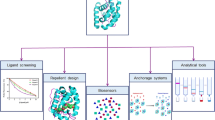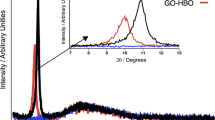Abstract
In this work, an ab-initio study of the electrical response to odorants of a self-assembled monolayer of a pig OBP immobilized onto a miniaturized Si-substrate equipped with gold interdigitated electrodes (IDE), was started. Electrical Impedance Spectroscopy (EIS) was used as electrical characterization technique and a dedicated experimental set-up was arranged in order to carry out EIS measurements in controlled environment. The EIS data was fitted by using a fitting software based on Levenberg–Marquardt (LEVM) algorithm to determine the equivalent circuit of the system.
Access this chapter
Tax calculation will be finalised at checkout
Purchases are for personal use only
Similar content being viewed by others
References
Flower DR, North ACT, Sansom CE (2000) The lipocalin protein family: structural and sequence overview. Biochim Biophys Acta 1482:9–24
Breer H (2003) Olfactory receptors: molecular basis for recognition and discrimination of odors. Anal Bioanal Chem 377:427–433
Pelosi P (2001) The role of perireceptor events in vertebrate olfaction. Cell Mol Life Sci 58:503–509
Hou Y, Jaffrezic-Renault N, Martelet C, Tlili C, Zhang A, Pernollet J-C, Briand L, Gomila G, Errachid A, Samitier J, Salvagnac L, Torbiro B, Temple-Boyer P (2005) Study of Langmuir and Langmuir-Blodgett films of odorant-binding protein/amphiphile for odorant biosensors. Langmuir 21(5):4058–4065
Hou Y, Jaffrezic-Renault N, Martelet C, Zhang A, Minic-Vidic J, Gorojankina T, Persuy M-A, Pajot-Augy E, Salesse R, Akimov V, Reggiani L, Pennetta C, Alfinito E, Ruiz O, Gomila G, Samitier J, Errachid A (2007) A novel detection strategy for odorant molecules based on controlled bioengineering of rat olfactory receptor I7. Biosens Bioelectron 22:1550–1555
Benilova IV, Minic Vidic J, Pajot-Augy E, Soldatkin AP, Martelet C, Jaffrezic-Renault N (2008) Electrochemical study of human olfactory receptor OR 17–40 stimulation by odorants in solution. Mater Sci Eng C 28:633–639
Lisdat F, Schäfer D (2008) The use of electrochemical impedance spectroscopy for biosensing. Anal Bioanal Chem 391:1555–1567
Marquardt DW (1963) An algorithm for least-squares estimation of nonlinear parameters. SIAM J Appl Math 11:431
Macdonald JR (1963) CNLS (Complex nonlinear least squares): immittance, inversion, and simulation fitting programs—LEVM Manual. SIAM J Appl Math 11:431 (Version 8.08, Issue data: February, 2007D.W. Marquardt.)
Vincent F, Spinelli S, Ramoni R, Grolli S, Pelosi P, Cambillaud C, Tegoni M (2000) Complexes of porcine odorant binding protein with odorant molecules belonging to different chemical classes. J Mol Biol 300:127–139
Acknowledgment
We are grateful to GOSPEL (FP6-IST 507610) for financing this initial study, and to Prof. Paolo Pelosi, University of Pisa for the Pig Odorant Binding Proteins.
Author information
Authors and Affiliations
Corresponding author
Editor information
Editors and Affiliations
Rights and permissions
Copyright information
© 2011 Springer Science+Business Media B.V.
About this paper
Cite this paper
Capone, S., De Pascali, C., Francioso, L., Siciliano, P., Persaud, K.C., Pisanelli, A.M. (2011). Odorant Binding Proteins as Sensing Layers for Novel Gas Biosensors: An Impedance Spectroscopy Characterization. In: Neri, G., Donato, N., d'Amico, A., Di Natale, C. (eds) Sensors and Microsystems. Lecture Notes in Electrical Engineering, vol 91. Springer, Dordrecht. https://doi.org/10.1007/978-94-007-1324-6_49
Download citation
DOI: https://doi.org/10.1007/978-94-007-1324-6_49
Published:
Publisher Name: Springer, Dordrecht
Print ISBN: 978-94-007-1323-9
Online ISBN: 978-94-007-1324-6
eBook Packages: EngineeringEngineering (R0)




